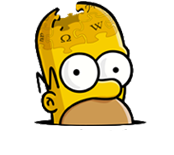
Difference between revisions of "Music production"
(Finished this part) |
(→Step one: Spotting session) |
||
| Line 17: | Line 17: | ||
{{Quote|Bart puts on a happy face to hide sad feelings he has over something that happened previously in the story. The audience already knows what he’s feeling on the inside and the music plays sad to remind them of that story point. Music for Homer is often ironic – he’s all pumped up about something he’s done or some scheme he is about to hatch and the music plays to his positive attitude. But by now the audience knows that like the Coyote chasing the Road-Runner or Charlie Brown trying to kick the football, things will not turn out as planned.|[[Chris Ledesma]]}} | {{Quote|Bart puts on a happy face to hide sad feelings he has over something that happened previously in the story. The audience already knows what he’s feeling on the inside and the music plays sad to remind them of that story point. Music for Homer is often ironic – he’s all pumped up about something he’s done or some scheme he is about to hatch and the music plays to his positive attitude. But by now the audience knows that like the Coyote chasing the Road-Runner or Charlie Brown trying to kick the football, things will not turn out as planned.|[[Chris Ledesma]]}} | ||
| − | There are | + | There are five types of music on the show, as with all film and TV. Underscore (score for short) is music that only the audeince hears and is used to help convey emotion or exemplify story. Source cues is music coming from an in-world source (e.g. [[Lisa's saxophone]], the TV, [[The Larry Davis Experience]], e.t.c.) and can be heard from the characters themselves. This music helps set the scene (e.g. in a restaurant) or can be emotionally or plot significant like [[Lisa]] listening to [[Bleeding Gums Murphy]] and being inspired. Montages - a series of short scenes with only music (perhaps a few sound effects as well). Most of the time they feature popular music with lyrics which relate to the scenes and tells the story. Sometimes Clausen writes an original score for a montage, such as "[[The Land of Chocolate]]". The final is a "Broadway-style musical production number", a mix of both source and score.<ref name="step 1"/> There are also format cues - these are the [[Main Theme]], End Credits, Gracie Films logo and FOX logo.<ref>[http://simpsonsmusic500.wordpress.com/2011/08/03/music-editing-101-music-spotting-notes/ Music Editing 101 – Music Spotting Notes] at [http://simpsonsmusic500.wordpress.com/ Simpsons Music 500]</ref> |
Music editor Ledesma writes many notes, originally long hand before switching to a laptop in 2004, while Clausen records the session, with a digital audio recorder (having replaced the micro cassette recorder in 2008).<ref name="step 1"/> | Music editor Ledesma writes many notes, originally long hand before switching to a laptop in 2004, while Clausen records the session, with a digital audio recorder (having replaced the micro cassette recorder in 2008).<ref name="step 1"/> | ||
Revision as of 17:16, September 4, 2011

|
Work in Progress! A work in progress is being carried out on this page by Cook879, and may undergo critical changes while this message remains in place. |
There are seven steps to music production on The Simpsons. [1]
Step one: Spotting session
Each episode's music starts with a 60-90 minute spotting session - when the composer, music editor, executive producer/show runner and sometimes the writer and film editor meet to pick the "spots" where music will play (Sound effect and dialogue production also utilizes these sessions with their respective editors). Usually these sessions are attended by Alf Clausen (composer), Chris Ledesma (music editor), Al Jean (executive producer/show runner), Larina Jean Adamson (supervising producer) and Dominique Braud (post production co-producer).
There are two sides to the spotting session based on the three key groups in the spotting session with Jean having the final decision. Jean forms ideas over the 7-9 months of writing, voice recording and animation while the writer may have inserted notes into the script. Meanwhile Ledesma and Clausen, having seen the episode for the first time, contribute fresh suggestions.
The group go through scene by scene discussing potential music. For every cue, Ledesma asks three questions crucial in the music spotting process: 1) Where does the cue begin?; 2) Where does the cue end?; 3) Why are we putting this cue in the show?
The timing is vital, as every second could evoke a different mood.
- "A cue that starts on Bart’s face may suggest to the audience that the music is about his emotions. Start the cue ½ second later during Lisa’s reaction and the audience is led to feel what Lisa is thinking about Bart at that moment. Sometimes a cue ends right on the cut to a new scene or location. This helps tell the audience that we are on to new business. Sometimes the end of a cue is a long, held chord or note called a “tail”. When we tail from the end of a scene into the start of the next, it forms a sort of emotional “bridge” carrying the emotion of the previous scene into the next, connecting the two."
- ―Chris Ledesma
Question three is important, as although, sometimes it can be obvious (such as sad music during sad scenes) other times the music can point towards the subtext of a scene.
- "Bart puts on a happy face to hide sad feelings he has over something that happened previously in the story. The audience already knows what he’s feeling on the inside and the music plays sad to remind them of that story point. Music for Homer is often ironic – he’s all pumped up about something he’s done or some scheme he is about to hatch and the music plays to his positive attitude. But by now the audience knows that like the Coyote chasing the Road-Runner or Charlie Brown trying to kick the football, things will not turn out as planned."
- ―Chris Ledesma
There are five types of music on the show, as with all film and TV. Underscore (score for short) is music that only the audeince hears and is used to help convey emotion or exemplify story. Source cues is music coming from an in-world source (e.g. Lisa's saxophone, the TV, The Larry Davis Experience, e.t.c.) and can be heard from the characters themselves. This music helps set the scene (e.g. in a restaurant) or can be emotionally or plot significant like Lisa listening to Bleeding Gums Murphy and being inspired. Montages - a series of short scenes with only music (perhaps a few sound effects as well). Most of the time they feature popular music with lyrics which relate to the scenes and tells the story. Sometimes Clausen writes an original score for a montage, such as "The Land of Chocolate". The final is a "Broadway-style musical production number", a mix of both source and score.[1] There are also format cues - these are the Main Theme, End Credits, Gracie Films logo and FOX logo.[2]
Music editor Ledesma writes many notes, originally long hand before switching to a laptop in 2004, while Clausen records the session, with a digital audio recorder (having replaced the micro cassette recorder in 2008).[1]
